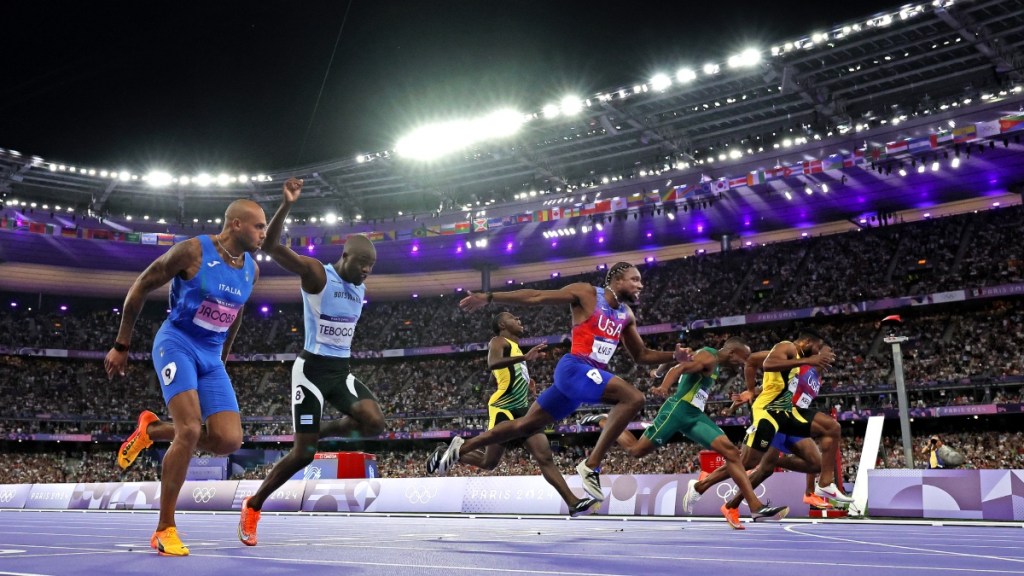Many fans are fascinated by the dramatic photo finish in the men’s 100m final at the 2024 Paris Olympics, where Noah Lyles edged out Jamaica’s Kishane Thompson. The razor-thin margin has captivated audiences and sparked intense discussions about how officials determined the result.
Here’s a detailed breakdown of how Lyles clinched victory in one of the closest Olympic sprints ever. We’ll also explain the photo finish technology that determined the result.
What is a photo finish in the Olympics?
A photo finish in the Olympics determines the winner when competitors cross the finish line nearly simultaneously.
High-speed cameras capture multiple images per second at the finish line, allowing precise identification of the order of finishers. This technology is crucial for close races, ensuring accuracy down to fractions of a second. The cameras’ images are analyzed to see whose torso crosses the finish line first, providing an objective and verifiable result.
How did Noah Lyles win?
Noah Lyles won the men’s 100m final at the 2024 Paris Olympics with a time of 9.79 seconds, as determined by a photo finish. He narrowly beat Jamaica’s Kishane Thompson by just 0.005 seconds.
Despite a slow start, Lyles executed a remarkable mid-race acceleration, moving from eighth place at the halfway mark to cross the finish line first, as verified by a photo finish. The photo finish system used high-speed cameras to capture images of the athletes crossing the finish line, ensuring precise results.
This technology scans the finish line 2,000 times per second and records the exact moment each athlete’s torso crosses the line. Although Thompson appeared to have his foot ahead, it was Lyles’ torso that secured his victory.
Lyles’ win was the closest in modern Olympic 100m history. The intense competition saw all finalists clock sub-10 second times. His triumph highlights the crucial role of photo-finish technology. This technology ensures fairness and accuracy in tightly contested races.










